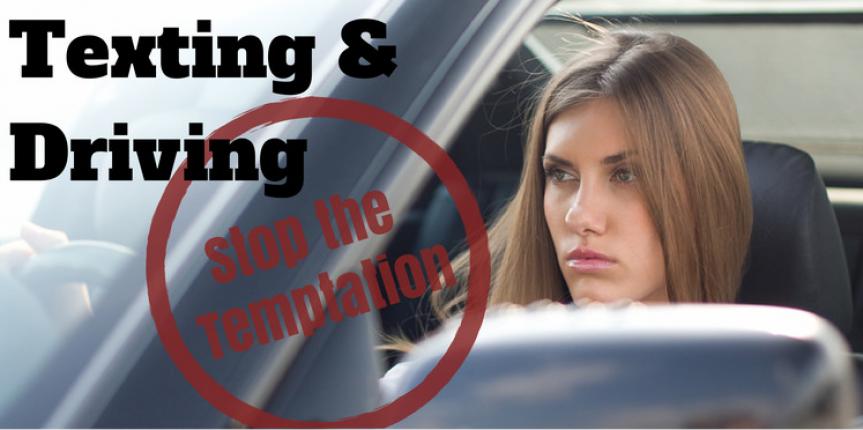Texting and Driving: A Growing Temptation
Original publication Jan 12, 2015 (*Updated)
It can be very tempting to look at that new text message that is just waiting to be read on your phone while you are driving. The constant need to be connected creates a strong desire to check your phone, even if you know it’s the wrong thing to do. Texting while driving is a lethal combination because it involves three different distractions: visual, manual and cognitive. The following facts about texting and driving are alarming:
- Five seconds is the average time your eyes are off the road while texting. When traveling at 55mph that’s enough time to cover the length of a football field.
- A driver who texts and drives is 23 times more likely to get into an accident than a driver who does not text and drive.
- Texting and driving causes nearly 25 percent of all car accidents.
Should texting while driving have penalties similar to DUI? Different states have different legislature about texting while driving. Arizona has very loose laws compared to nearly all other states in regards to preventing texting while driving. Although texting while driving is illegal in Phoenix’s city limits, it isn’t illegal statewide. In Phoenix, drivers are prohibited from text messaging and can face fines up to $250. Texting while driving is also illegal in Tucson.
Looking at the Governors Highway Safety Association there are only four states that have not placed a ban on texting and driving as of May 2016. These include Arizona, Missouri, Montana, and Texas. Considering the continued catastrophic results caused by texting and driving it makes one wonder why Arizona and the other three remaining states have not implemented this law. If you review the photo below you will see that the only ban for Arizona is for school bus drivers.
According to the Arizona Department of Public Safety (DPS), approximately 10% of the total amount of crashes in Arizona in 2015 were caused by distracted drivers. This equates to 2,729 distracted driving accidents for this short period of time.
If you want to help yourself or someone you care about to stop texting while driving, here are some tips:
- Out of sight, out of mind: When you’re in the car, put your phone where you cannot get it – a place where you won’t even be tempted to look for it. No phone = no texting.
- Silence is golden: Turn your phone notifications off. The less you hear your phone, the less tempted you’ll be to respond while you’re driving.
- Find your app: There are several apps that can help you stop texting and driving. Download your favorite app and don’t forget about it in the car.
- Designate a texter: Give passengers the privilege of texting while the you drive if possible.
Parents of teenage drivers should set a good example and not use a phone while driving. Teenagers are the highest at-risk group being affected by the dangers of texting while driving as they are inexperienced on the road and may have more distractions. 77% of young adults are very or somewhat confident that they can safely text while driving. Texting while driving is a growing trend and quickly becoming one of the country’s top killers. The numbers don’t lie – every day 11 teenagers lose their lives because of texting while driving.
Let’s take the pledge to stop texting while driving.
2016 Distracted Driving Legislation
- Senate Bill 1135 - This would bar public transit drivers from using handheld communications devices for phone calls or texting.
- Senate Bill 1349 - Would make texting and social media use by drivers an aggravating factor in felony sentencing cases.
- House Bill 2241 - Would bar holders of instruction driver’s licenses from using wireless communications devices.







